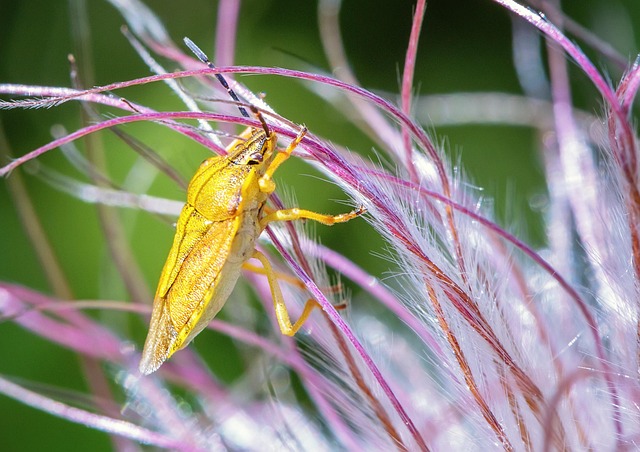Boxelder bugs, common in North America, prefer warm, moist environments with boxelder trees but can infest homes. Commercial removal methods exist, but understanding their behavior favors natural prevention strategies. Essential oils (citronella, peppermint, neem) and plants (chrysanthemums, lavender, marigolds) act as deterrents due to their scents and compounds. Effective commercial removal involves sealing entry points, using natural repellents, encouraging predators, and regular landscaping. Prevention is key through multi-faceted approaches: physical barriers, biological controls, and chemical repellents, along with proper exterior maintenance.
Boxelder bugs are a common pest, known for their swarming behavior and ability to invade homes. Understanding these insects and their lifestyle is key to effective control. This article guides you through natural repellents, offering eco-friendly alternatives to chemical pesticides. We explore deterrents, providing practical tips for commercial boxelder bug removal and long-term preventive measures to keep your space bug-free. Discover how to navigate the world of pest management with efficient, sustainable solutions, focusing on commercial applications.
Understanding Boxelder Bugs and Their Behavior
Boxelder bugs, scientifically known as Boisea trivittata, are a common pest in North America, particularly during their swarming phase in late summer and early fall. These insects get their name from their preference for boxelder trees (Acer negundo), but they can infest a variety of structures, including homes. Understanding their behavior is crucial when considering natural repellents and deterrents.
Boxelder bugs undergo a remarkable metamorphosis, starting as eggs, then nymphs, before becoming adults. They are most active during the day, especially in sunny areas, and are attracted to warm, moist environments with plenty of food sources. Commercial boxelder bug removal methods often involve targeted treatments, but for those seeking natural alternatives, understanding their behavior can guide effective prevention strategies.
Exploring Natural Repellents: Effective Alternatives
When it comes to natural repellents for boxelder bugs, there are several effective alternatives to consider. Unlike commercial boxelder bug removal methods that often rely on synthetic chemicals, natural solutions offer a safer and eco-friendly approach. Essential oils like citronella, peppermint, and neem oil have proven to deter these pests due to their strong scents and chemical compounds. Plant-based repellents can be applied topically or diffused in affected areas to create an environment that makes boxelder bugs think twice before invading.
In addition to essential oils, certain plants act as natural deterrents. For instance, planting chrysanthemums, lavender, and marigolds around your home can help keep boxelder bugs at bay. These flowers contain compounds that are unpleasant to these insects, serving as a physical barrier against their presence. Exploring these natural options not only reduces exposure to potentially harmful chemicals but also promotes a more sustainable and balanced ecosystem in your living spaces.
Implementing Deterrents: Tips for Commercial Boxelder Bug Removal
Implementing Deterrents: Tips for Commercial Boxelder Bug Removal
For businesses facing boxelder bug infestations, effective commercial boxelder bug removal requires a strategic approach. Start by identifying and sealing entry points, such as gaps around windows, doors, and utility pipes. Regularly clean and maintain outdoor areas, removing potential hiding spots like leaf piles and brush. Landscaping practices play a crucial role; keep tree branches trimmed and mow grass regularly to reduce habitats that attract these bugs.
Implementing natural deterrents can also be highly effective. Essential oils like citronella, peppermint, and eucalyptus oil have shown promise in repelling boxelder bugs. Applying these oils around affected areas or using them in homemade sprays can create a protective barrier. Additionally, mixing garlic powder or hot peppers with water and spraying the solution can act as a natural deterrent, making these areas less appealing to the bugs.
Preventive Measures: Long-Term Solutions for Management
Preventing an infestation is often more effective and less disruptive than eliminating established boxelder bugs. Long-term solutions for managing these pests involve a combination of physical, biological, and chemical strategies. One of the most straightforward approaches is to seal entry points into your home or structure. Boxelder bugs are drawn to sunlight and warm temperatures, so ensuring your space is well-insulated and that windows are equipped with screens can deter them from entering. Regularly inspecting and maintaining exterior vents, cracks in foundations, and spaces around doors is crucial for preventing access.
Additionally, introducing natural predators or using repellents can be part of an integrated pest management (IPM) strategy. Birds, spiders, and certain insects feed on boxelder bugs or their eggs, so encouraging these natural inhabitants in your environment can help control populations. Commercial boxelder bug removal products that utilize essential oils like peppermint, clove, or citronella have been shown to repel these pests effectively without causing harm to the environment or non-target species.
In summary, understanding the behavior of boxelder bugs and utilizing natural repellents are effective ways to manage these pests. Exploring alternatives to chemical treatments, such as essential oils and plant-based solutions, offers a safer and more eco-friendly approach, particularly for commercial spaces seeking long-term solutions. Implementing deterrents and taking preventive measures can significantly reduce the risk of boxelder bug infestations, providing a comprehensive strategy for both residential and commercial boxelder bug removal.
